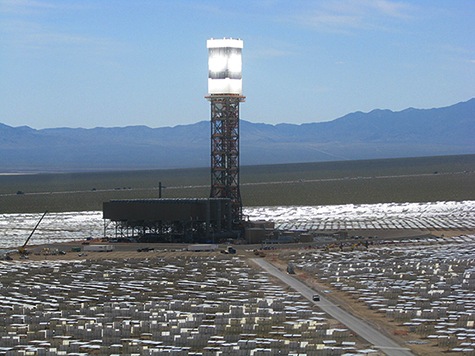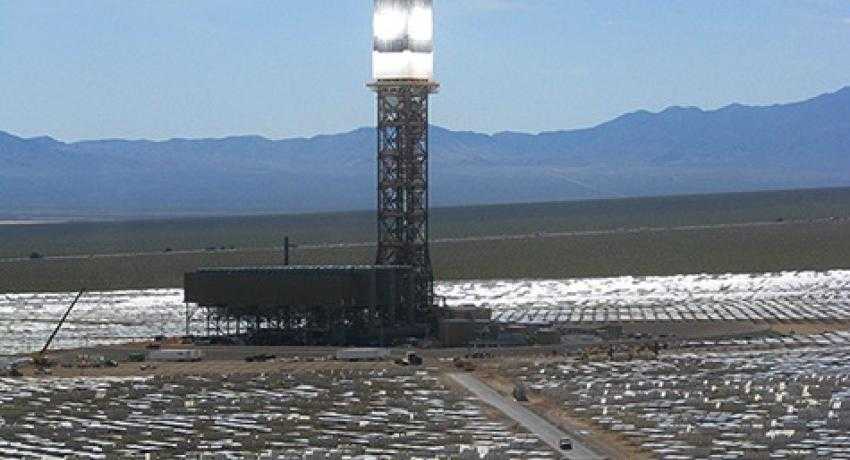BrightSource abandons 500 MW Rio Mesa solar project
 On July 1, BrightSource formally abandoned its planned Rio Mesa Solar Electric Generating System (SEGS) project after facing issues including fossil finds, wildlife issues and opposition from some environmental groups and Native American nations. The 500 megawatt project would have consisted of two 750-foot-tall solar power towers.
On July 1, BrightSource formally abandoned its planned Rio Mesa Solar Electric Generating System (SEGS) project after facing issues including fossil finds, wildlife issues and opposition from some environmental groups and Native American nations. The 500 megawatt project would have consisted of two 750-foot-tall solar power towers.
The company formally cancelled the project by sending a letter to the California Energy Commission (CEC), which withdrew its Application for Certification with the commission in a short letter, with little explanation as to why it was abandoning the project. The withdrawal of the project comes after significant delays, including when the company mothballed the project in January 2013 after receiving approval from the California Public Utilities Commission (CPUC) in October 2012.
The project has faced many obstacles including a newly discovered Ice Age fossil bed. However, the project also faced steep criticism from the Native American community, even partly inspiring a documentary, “Who Are My People?”, that dealt with how many large-scale solar projects were approved by the Bureau of Land Management and others, despite outcry from the Native American community, chief among them the Chemehuevi, Quechan nations and by the La Cuna de Aztlan Sacred Sites Protection Circle, which filed lawsuits against numerous solar projects on the basis that they disturbed scared lands and hieroglyphs and geoglyphs.
The project was approved in October, even then there were signs of it being in some trouble, according to ReWire, a renewable energy blog at California public radio station KCET. “CPUC made pointed remarks about the cost of the project's power saying in a draft resolution that the agreements ‘compare poorly on price and value relative to other solar thermal projects offered to SCE.’,” according to the site.
Rio Mesa is the latest concentrating solar power (CSP) using thermal concentration to fall victim to the steeply falling prices of photovoltaics and other environmental factors like flora and fauna concerns. Unlike PV projects, the CSP project must reach larger sizes to produce electric cost-effectively, so while a PV project as small as 50 megawatts or even 10 megawatts can produce electricity at increasingly cost-competitive rates, a CSP project generally must be of the 100 megawatt scale or larger to make economic sense.
Still, BrightSource’s first project, the Ivanpah SEGS being built by Bechtel for BrightSource, is nearly complete and should come completely online by the end of 2013. The company also is moving forward on other projects. For instance, in March, it announced that it partnered with Abengoa to build the 500 megawatt Palen SEGS. That project, however, is proposed for a Department of Interior Solar Energy Zone, which was pre-screened for issues BrightSource faced at Rio Mesa.




